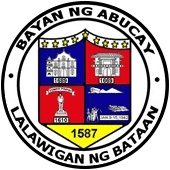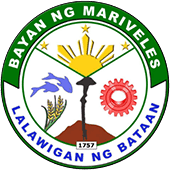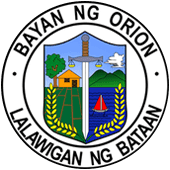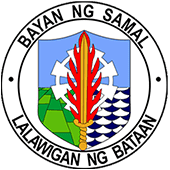Dinalupihan
- Home
- Dinalupihan
A Brief History of Dinalupihan
Legend
The story goes that even when Dinalupihan was still a barrio of Hermosa, its people manifested a fighting instinct which served them well in the development of their community and in their defense against alien invaders and local criminals. The place got so famous for its fighting spirit that it came to be known as “di-nalupigan” or not conquered. The name “Di-nalupigan” stuck, but as luck would have it, the letter “g” was inadvertently changed to “h” during the registration of its name. Thus, the town with a fighting heart is now known as Dinalupihan.
Background
But whether it is “Di-nalupigan” or Dinalupihan, history is witness to how the residents fought like tigers during the Spanish revolution of 1896 and during the Japanese invasion.
Records show that Dinalupihan was risen into parish in 1856 and place under the patronage of San Juan Bautista.
Elected Officials
Mayor: German M. Santos Jr..
Vice-Mayor: Fernando P. Manalili
Sangguniang Bayan Members:


PRESENT
The town of Dinalupihan gradually rose to heights. It now hosts provincial government offices of the Department of Agrarian Reform (DAR), NIA, Pag-ibig Fund and the Government Service Insurance (GSIS) that serves Bataan and Zambales public employees. They also have sports facilities like an Olympic size swimming pool, track and field, and a covered basketball court that have been venues for sporting events like the Palarong Pambansa and the CLRAA Meet. A civic center where nationally acclaimed production outfits have showed great stage plays is also in this town as well as the Dinalupihan oval.
Dinalupihan is the only town in Bataan that does not have a shoreline. And is the second smallest in terms of land area (9,252.73 has.) but still has the most number of barangays (46) in the province.
FAST FACTS
Dinalupihan is located 95 kms. East of Manila and can be reached through the Olongapo-Gapan route via the North Luzon Expressway.
The town has a total land area of 9,252 hectares representing 6.7% of the total land area of Bataan.
It is composed of 46 barangays with a total population of 118,209 as of May, 2020 and has a projected population of 126,358 by 2023.
Dinalupihan is primarily an agricultural town whose main resources are palay, sugar cane, corn, root crops, legumes and fruits including livestock and poultry.
UTILITIES AND AMENITIES
Major telephone companies servicing the town are Digital Telecommunications (Digitel) and Bayan Telecommunications (BayanTel). Cellular phones are also available through Smart, Mobile and Globe Telecom.
Radio communications Philippines, Inc. (RCPI), provides telegram and telegraph services.
Electricity is provided by Peninsula Electric Cooperative (PENELCO).
The Dinalupihan Water District I serves 19 barangays while other areas use free – flowing pumps and deepwells. On going operation is DWD II which serves Barangay Naparing to Bangal.
The town has a total of 16 banks, 60 schools (43 public schools and 17 private schools), 4 Rural Health Units, 7 Medical & Laboratory Clinic, 7 Dental Clinic, 4 Optical Clinic, 5 Other Medical Services, 4 recreational facilities and public market (2021 SOCIO-ECONOMIC PROFILE 2023).
MAJOR INDUSTRIES
Dinalupihan specializes in the manufacture of “sawali” and torch, food processing, and tinapa (smoked fish) production. The town is also known for its agricultural produce such as palay, sugar cane, corn, root crops, legumes and fruits. Animal raising like poultry and livestock is also a main source of livelihood for the townfolk.
PALAY PRODUCTION
As of 2021 (2021 SOCIO-ECONOMIC PROFILE 2023), the total area utilized for growing rice is 4,860.50 hectares, producing an estimated 18,893.92 metric tons or 410,737 cavans. The average yield per hectare is calculated to be 3.89 metric tons or 85 cavans.
The rice self-sufficiency level in Dinalupihan is 125.21%, which indicates that there is a surplus of 25.21% in the net production of rice, taking into account production, post-harvest losses, and actual consumption in the municipality (2021 SOCIO-ECONOMIC PROFILE 2023).
INVESTMENT OPPORTUNITIES
The developing municipality of Dinalupihan is committed to its objective of being a modern agropolis in Central Luzon owing it to the rich agricultural land and efficient farmers in this town that yields twice the capability of the harvest per hectare.
Dinalupihan is a strategic avenue to reach various places in Bataan as well as links to expressways and routes leading to other parts of Luzon making it an ideal investment destination for tourism and logistics-related investments.
Soon, FAB Expansion Areas will be located in this town for manufacturing and other related industries.
The Bunker
@ The Capitol Compound
Tenejero, Balanga City, Bataan 2100
Mon – Fri: 8:00 am – 5:00 pm


















